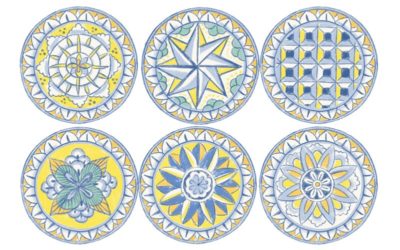1 February, 2022
Where Earth Meets Fire
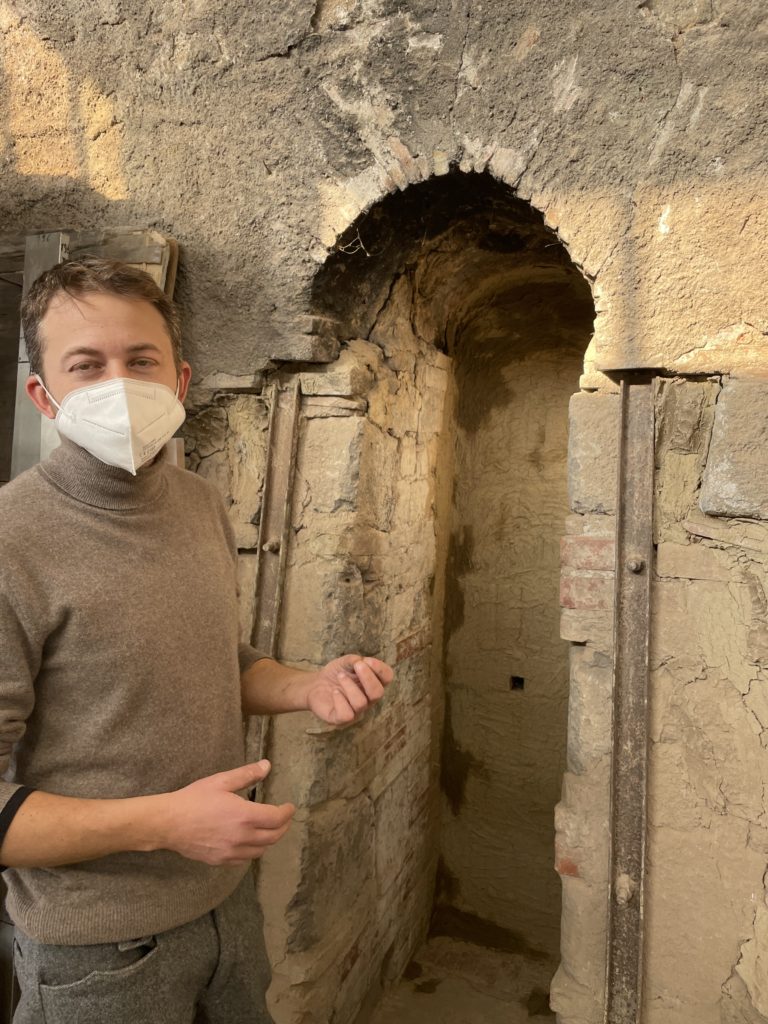
‘I graduated in engineering and started working for Fiat.’ Daniele says. ‘But I couldn’t stand sitting in front of a computer all day. My heart was always here.’ He flings his arms wide as though trying to embrace the entire property, the surrounding valley and the ragged line of distant mountains fading into winter fog. ‘I grew up here, among the furnaces. It is in my blood. So in the end, I came back.’
Daniele is the latest generation of De Martino family whose long line of “Mastri del Cotto” (cotto masters) can be traced back to the late 1400’s. Excavated from the nearby hillside, clay is the stuff that binds the family to the ancient furnaces and their rich tradition of “cotto” tile-making, famous throughout the Salerno region and more particularly, the Amalfi Coast.
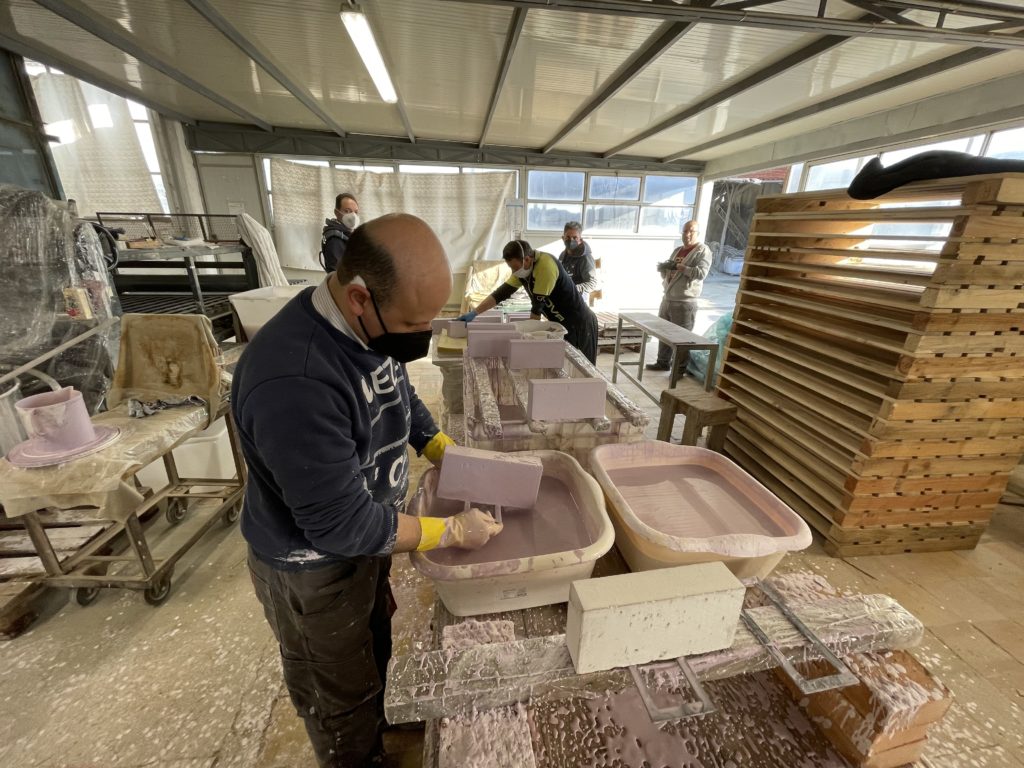
His father and uncle stroll by, overseeing the production of latest orders for shipment to Greece and Korea. The assembly line of workers are colouring the clay in preparation for baking. Each brick is double dipped in a lilac pink liquid. ‘All the powders we use for colour are made from natural materials. It’s tricky, because they change on contact with the heat, so you have to know exactly what to mix to produce the exact shade you’re after. These tiles, for instance appear light pink, but they will transform to a deep blue once cooked.’
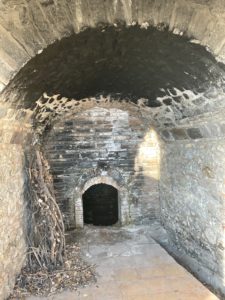
Daniele’s father, Tommaso, takes a break to chat. ‘The world is changing.’ He sighs. ‘Before World War Two, there used to be twelve factories like us. Now we are the only one left in Italy who still produce tiles in the old way, working the same clay, using the same techniques and the same furnaces.’
“The old way” is a lengthy process that starts from the moment the raw materials are trucked in, cleaned, formed, dried, squared and cooked for nearly 48 hours in one of the two mammoth stone ovens that have stood for more than a thousand years.
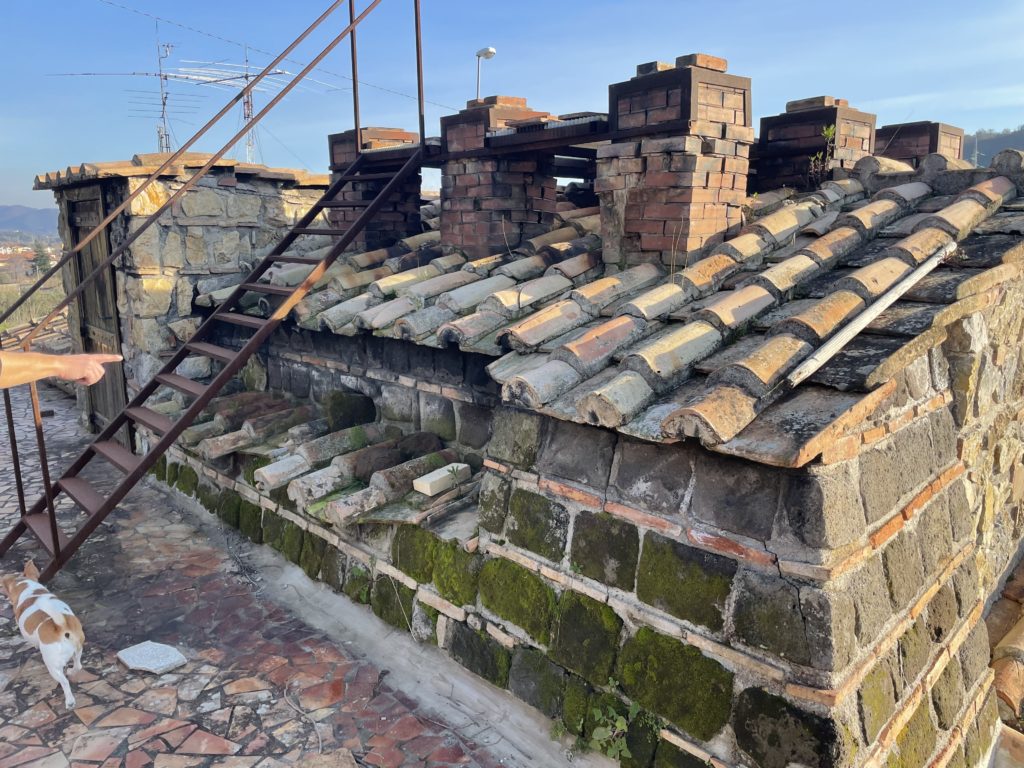
Daniele ascends to the three chimney stacks atop one furnace, from where he can observe and regulate the heat inside through small openings in the stone wall. ‘If the flame is a light salmon colour, it is not hot enough. We can tell the temperature inside the furnaces by the colour of the fire.’
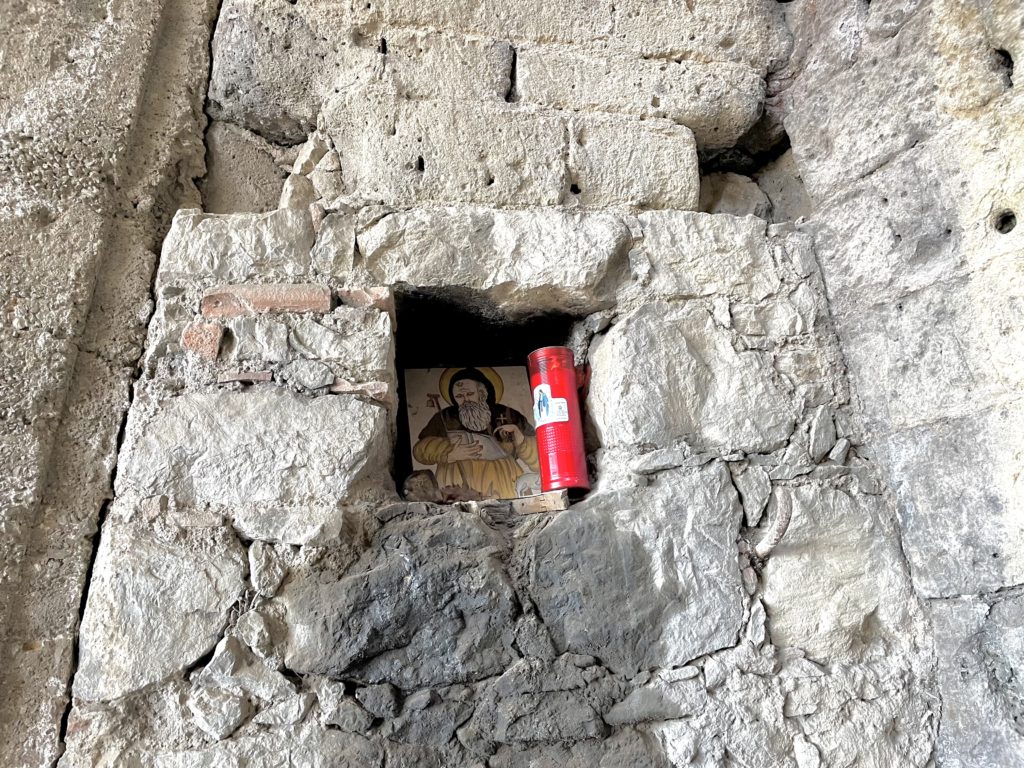
Fire is given special reverence as the second most crucial element of their craft after earth. A nook outside the furnace wall holds a candle in front of a painted tile of St. Antonio Abate, the patron saint of fire. ‘The candle is lit at the same time as the furnace and left to burn until the load is finished. He is the keeper of the flame.’ Daniele explains. ‘Come on, I want to show you the fun part.’
He is referring to the room where the artists work their magic and recalls a studio where Michelangelo or Da Vinci might once have labored. A wooden table overflowing with colourful powders in clay jars, mixing liquids, paint brushes and design canvases taking center stage, surrounded by chairs, shelves crowded with art materials and stacks of tiles. Some are quite exceptional, conceived by artists who come from all over the world to learn, experiment and create stand-alone pieces. These curiosities are proudly displayed in rows along the walls.
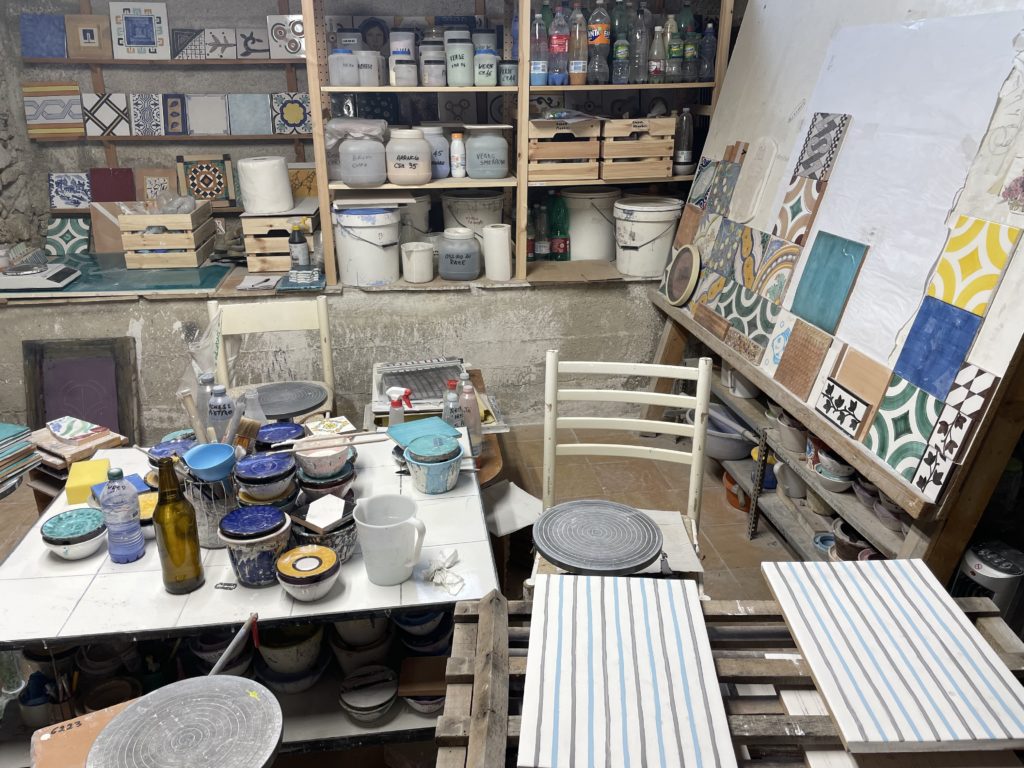
This is also where the tiles for the San Pietro, specially designed by Fausta Gaetani, really come to life. Each is a labour of love, hand-painted with their unique patterns. No design is replicated in more than two rooms throughout the hotel, ensuring their individuality. Tiles for this year’s newly renovated rooms are the current paint project.
‘We are almost done.’ Daniele announces. ‘We should be ready to transport the entirety to the hotel within the next couple of weeks.’
Outside the workshop, stacks of completed tiles stand waiting, “San Pietro” scrawled on each crate in permanent marker. This will be the final massive order resulting from the collaboration between the San Pietro and Fornace De Martino, when the Cinque brothers embarked on their massive plan to renovate the entire hotel over fifteen years ago.
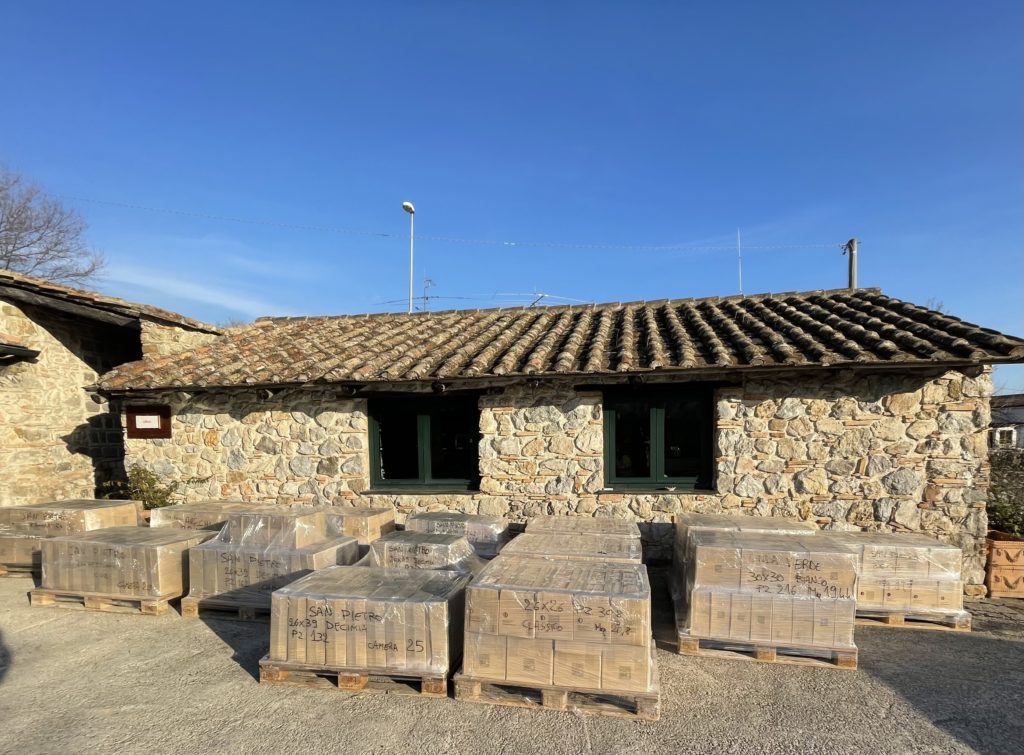 ‘Apart from our social responsibility and commitment to always promote local artisans and factories whenever possible,’ Vito Cinque says. ‘we also wanted the best for the hotel and our guests, and the Fornace De Martino tiles quite simply are. Without their skill, we would not have such a unique and beautiful aesthetic to each of our rooms and without support from businesses like ours, crafts like theirs would completely disappear.
‘Apart from our social responsibility and commitment to always promote local artisans and factories whenever possible,’ Vito Cinque says. ‘we also wanted the best for the hotel and our guests, and the Fornace De Martino tiles quite simply are. Without their skill, we would not have such a unique and beautiful aesthetic to each of our rooms and without support from businesses like ours, crafts like theirs would completely disappear.
‘We have been proud to work with the San Pietro to help realise their dream.’ Daniele adds. ‘Now the De Martino craftsmanship is part of this historic hotel just as the hotel has become a part of our own rich history.’
Website: https://www.fornacedemartino.it/en/la-fornace/
The creation of the San Pietro tiles 2022, hand-painted by local artisans



